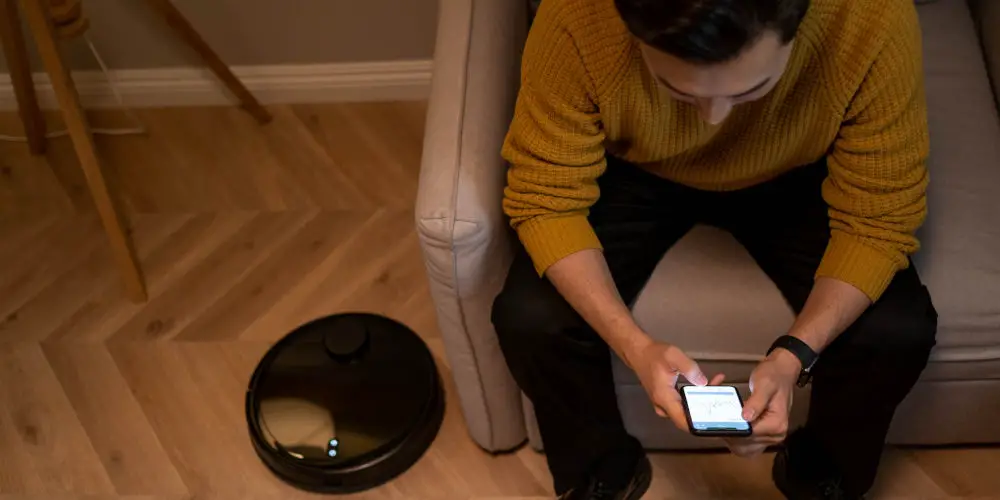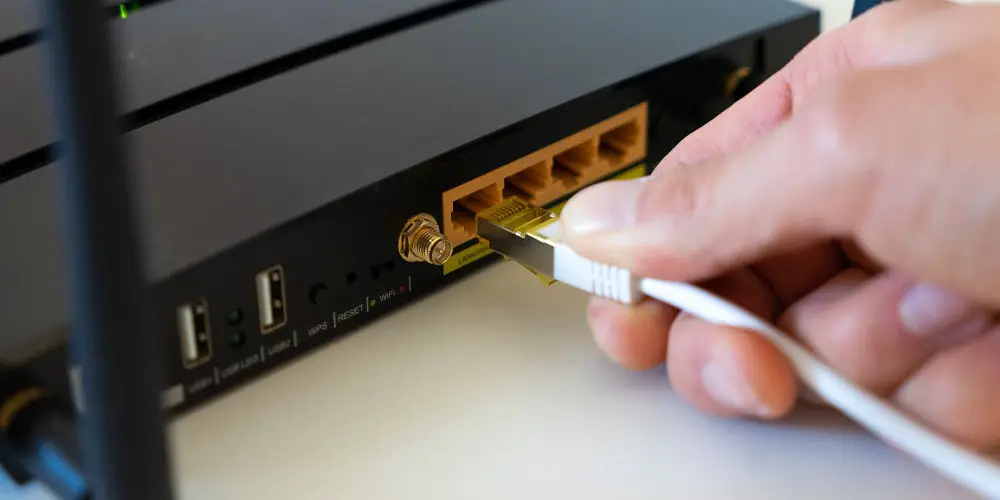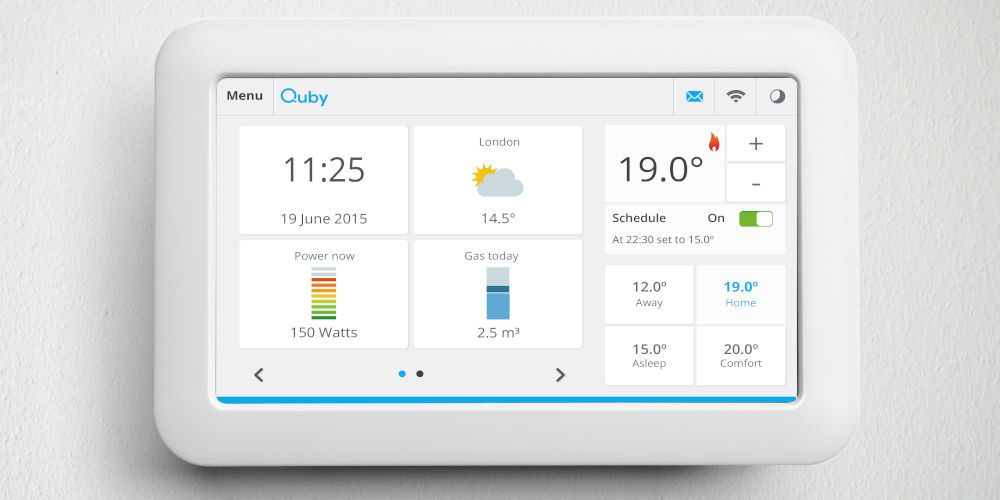How to secure your smart home devices in 7 steps

One of the problems with turning your property into a smart home, is you’re also likely to make it more insecure. So, while life is easier, you should know how to secure your smart home devices and follow those steps.
It’s easy to think of hackers as a nefarious group that won’t target you or are blown out of proportion by the media. But the reality is hackers target anyone. They will steal and misuse your personal information and even take control of those smart cameras or microphones to spy on you.
By owning smart devices such as smart speakers, TVs, thermostats, fridges, and security cameras, your privacy and security could be easily compromised. Each device offers an entry point that could leave you vulnerable to attacks.
If you’re investing money in building a home automation system, you should also spend time and energy in securing it. Here are seven ways how to secure your smart home devices.
#1 Correctly configure your Wi-Fi router
As the doorway to your smart home, your want to ensure your Wi-Fi router is secure. You don’t want to leave a welcome mat for your cybercriminals to find and walk over. So, it’s worth following a few simple steps and creating a more secure smart home.
Change your router’s default name
A common mistake is forgetting to change the router’s default name. Usually, this is its make and model. If the wrong person discovers this information, they can look up the default login and password in seconds, allowing them easy access to your smart home system.
Changing your router’s name to something unusual that’s not associated with you or your address takes seconds. It’s best to be creative with your router name but don’t give away any personal identifiers.
Use a unique password
As with the router’s name, the default router password isn’t very secure and is easy to guess. So, change the router’s password to something truly unique.
Consider using complex passwords made up of letters, numbers, and symbols. You might want to use a random password generator to create a near-impenetrable password.
Use the Highest Level of Encryption
Finally, ensure you’re using the highest level of encryption, currently WPA3. If your router only supports the WPA or WEP protocols, you should upgrade it quickly.
Wi-Fi routers are primary targets for hackers. So, any time spent increasing its security means a substantially more secure smart home.

#2 Use (nearly) impossible to crack passwords
Another way to secure your smart home devices is to always use super-strong passwords. Your task isn’t finished after updating your router’s password.
Most smart devices require you to create an account before using them, especially if they have a mobile app. It’s vital to create unique credentials for every account and app. It might sound like a lot of work but is totally worthwhile.
By creating unique credentials for every IoT device, if one is compromised, the others remain secure and intact. Of course, this does create an issue as you now need to remember multiple passwords.
We’d advise against writing them on a scrap of paper. Instead, use a password management tool such as LassPass. These tools store unlimited unique passwords, create new ones, and even sync them between various devices.
#3 Keep devices up to date
When was the last time you updated your smart home devices? Or even checked for updates? It might have been a while, meaning you could be quite vulnerable without realising. Updates often include essential security patches that greatly enhance your network’s security.
Some devices will update automatically, but not all will. It’s vital to check your devices every couple of months to ensure they are running the latest firmware. If you find any pending firmware updates, install them right away.
Similarly, many devices and their apps will only prompt you to update them. So, when you see a new update is available, take a few minutes to download and install the new firmware. Don’t procrastinate.

#4 Disable unused features
Many home automation systems allow you to control them from anywhere with Wi-Fi. Great if you often travel or like to turn the heating on as you leave the office. However, if you don’t need remote access as you only use them on your home’s Wi-Fi network, then disable the feature.
If you have a smart speaker and only use it to play music, use the Bluetooth connectivity to stream songs from your phone or tablet. You can turn its Wi-Fi function on every few months for new updates.
Another way to secure your smart home devices is to disable voice control on most units. If you’re using Alexa, Google Assistant or Siri on your phone or tablet, you don’t need to use voice-control on your soundbar or smart TV.
Before you think we’re paranoid, there is a good reason. An active mic, if hacked, can also be used to pry on and record your conversations. So, disabling unused features reduces the number of entry points to a minimum, keeping your system safe and secure.
#5 Enable two-factor authentication
In the last few years, multi-factor authentication has become all the rage and for good reason. The type most used is Two-factor authentication (2FA) and it adds another layer of security beyond a mere password.
With two-factor authentication, when trying to log in, you’ll be asked to provide additional proof of identity. Typically, you’ll be asked to enter a one-time pin (OTP) or a verification code that’s sent to your phone or email address.
Most smart devices, by default, have the multi-factor authentication feature. But some don’t, so be aware. You can enable 2FA by using third-party apps such as Google Authenticator.
Even if your IoT device and its app both have two-factor authentication, it’s still worth having an extra layer of security via a trusted third-party service as this can give you further peace of mind.

#6 Create a separate Wi-Fi network for smart devices
The majority of modern routers offer the ability to set up a guest (or secondary) network. Using a separate network for your smart devices can protect your main network from threats.
Friends, family and guests can log into your primary network and can’t touch your smart home devices. Only you can access the secondary network, keeping it secure.
With two networks, if hackers do manage to breach your secondary network, they can’t access any of your more important devices, such as your laptop or smartphone.
#7 Install a Next-Generation Firewall
Every router has a fairly basic built-in firewall. And while this is better than nothing, it still might not be enough.
Traditional firewall lacks important security features like an intrusion prevention system (IPS), malware protection, content filtering, SSL/SSH interception, QoS management, and virtual private network (VPN).
Hence the need for a next-generation firewall (NGFW). An NGFW is an integrated network platform that combines a traditional firewall with advanced security functionalities, including those mentioned above.
NGFW can help secure your smart home devices as they detect and protect against cyberattacks. They are fairly expensive. However, the security boost they provide to your smart home is a worthy investment.
Simply put, if you can afford to invest in a range of smart home devices, you can spend the extra to secure them and ensure your privacy.
That’s how to secure your smart home devices
Even with the most expensive, latest smart home devices, it’s still down to you to ensure you’ve taken the step to secure your smart home devices.
It’s vital before buying that you do your research. Check if the manufacturer still offers updates and support. Do they respond quickly to any vulnerabilities reported by users or brush them under the carpet?
It takes time and money to ensure your smart home system and devices are safe and protected. However, it’s better to be safe than sorry.




